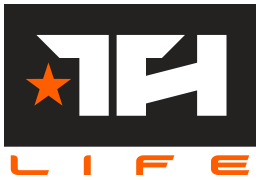When it comes to fitness, we all want to feel strong, energized, and unstoppable. But let’s face it—aches, pains, and injuries can be major roadblocks on your journey to peak performance and feeling good each day.
Whether it's a nagging shoulder pain, a stiff lower back, or a knee that just won't quit complaining, these issues can slow you down and derail your fitness goals.
But here’s the deal: you don’t have to accept pain as your new normal. Corrective exercise is your secret weapon to bounce back stronger, eliminate pain, and keep moving forward with confidence.
Corrective exercise isn’t just about addressing pain after it shows up. It’s about preventing it in the first place. Think of your body as a high-performance machine. Every part has to be aligned, balanced, and working in harmony for you to function at your best. When one part is out of whack, it throws everything off.
This is where corrective exercise comes in—it's like fine-tuning your body to prevent those common aches and pains before they become chronic problems.
Let’s break it down: corrective exercises are targeted movements that help improve posture, alignment, and muscle imbalances. These exercises are designed to restore proper function to your joints and muscles, allowing you to move more efficiently and with less pain.
The beauty of corrective exercise is that it’s highly personalized. It’s all about identifying your specific movement patterns and addressing the root cause of your discomfort.
For example, if you’re dealing with lower back pain, it might be due to tight hip flexors, weak glutes, or poor core stability. A corrective exercise program might include stretches to lengthen those tight hip flexors, strengthening exercises for the glutes, and core work to stabilize your spine. The goal is to create balance in your body so that no one muscle group is overworking or underperforming.
Another common issue is shoulder pain. Often, this stems from poor posture and a lack of mobility in the shoulder joint. Corrective exercises might focus on improving thoracic spine mobility, strengthening the muscles around the shoulder blade, and stretching out the chest and shoulders. By addressing these underlying issues, you can alleviate pain and prevent it from coming back.
But here’s the kicker: corrective exercise isn’t a one-and-done deal. It’s something you need to integrate into your regular fitness routine. Think of it as maintenance work for your body—just like you wouldn’t skip oil changes for your car, you shouldn’t skip your corrective exercises. The more consistent you are, the better your results will be.
So, what are you waiting for? Don’t let those aches and pains keep you from reaching your full potential. Whether you’re recovering from an injury or just want to stay ahead of the game, corrective exercise is your ticket to a stronger, pain-free body.
Remember, it’s not about pushing through the pain; it’s about working smarter to build a body that’s resilient, balanced, and ready for anything.
If you need help getting started, check out our incredible program called Movement IQ by Corrective Exercise Expert, Steven Holmsen. This program has everything you need to prevent injury, as well as support the current nagging aches and pains you may have. Click here to learn more
Keep showing up, keep putting in the work, and your body will thank you.
**Legal Disclaimer: Power Nation Productions, LLC, TonyHortonLife.com and Tony Horton (“we,” ” us,” “our”) does not warrant, endorse, guarantee, or assume responsibility for the information provided by third parties or third-party websites. Furthermore, we do not provide fitness, nutrition medical, or supplement advice. All information provided is for educational purposes only and is not a substitute for professional medical advice. Accordingly, before you take any action based on such information we provide, we encourage you to consult the appropriate professionals. The use or reliance of any information provided is used solely at your own risk.
